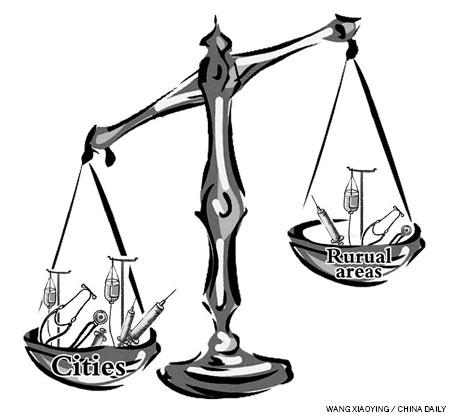Proper healthcare for one and all

China's economy has developed at a fast pace over the past three decades, lifting about 400 million people out of poverty. It has improved people's health, too. One of the consequences of economic development is the increase in life expectancy at birth from 69 in 1990 to 73.5 in 2010. Also notable is the decline in infant mortality rate (expressed as per 1,000 live births) from 38 in 1990 to 13.8 in 2009, and under-5 mortality rate (per 1,000 live births) from 46 in 1990 to 17.2 in 2009.
Despite this progress, however, many health issues in China remain unresolved. While wealthier Chinese people have benefited from advanced medical technologies, many poor people do not have adequate access to even the most essential medical services. About 80 percent of China's healthcare and medical services are concentrated in cities, and timely medical care is not available to more than 100 million people in rural areas.
Although some progress has been made in rural areas, many people in such areas are still malnourished, vitamin- and mineral-deficient, and victims of indoor air pollution. About 80 percent rural households do not have access to sanitized lavatories and 20 percent lack safe drinking water.















